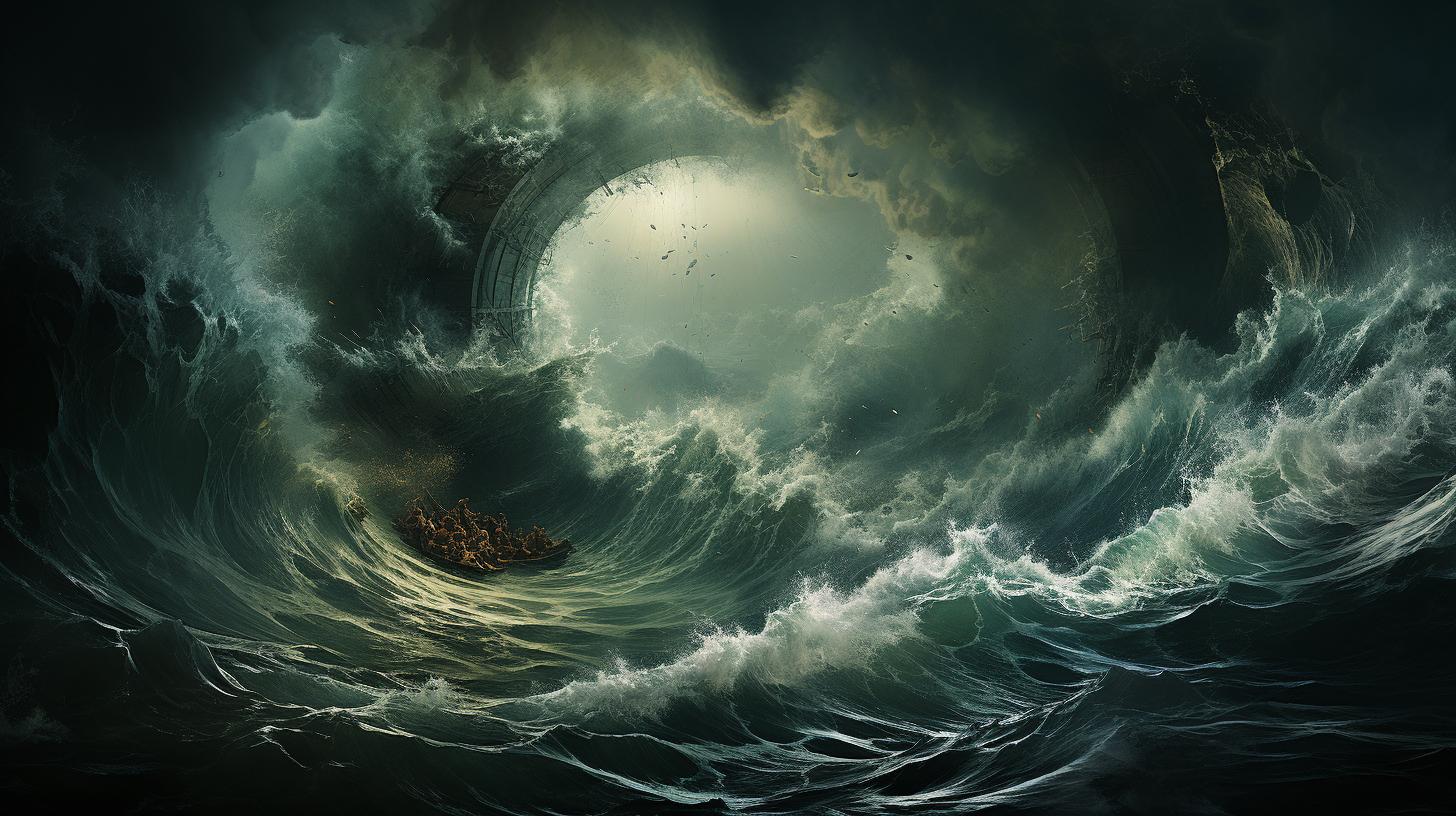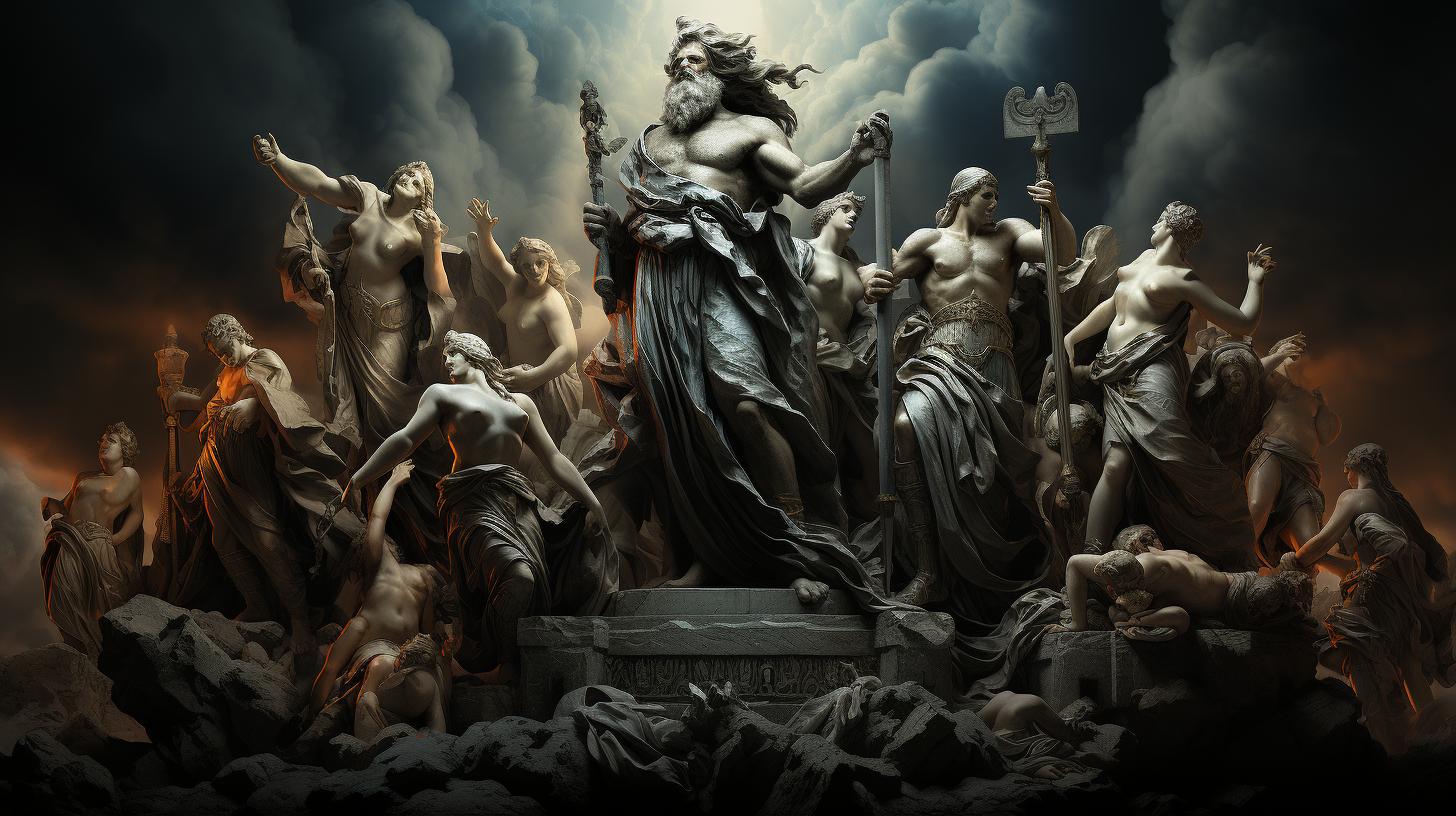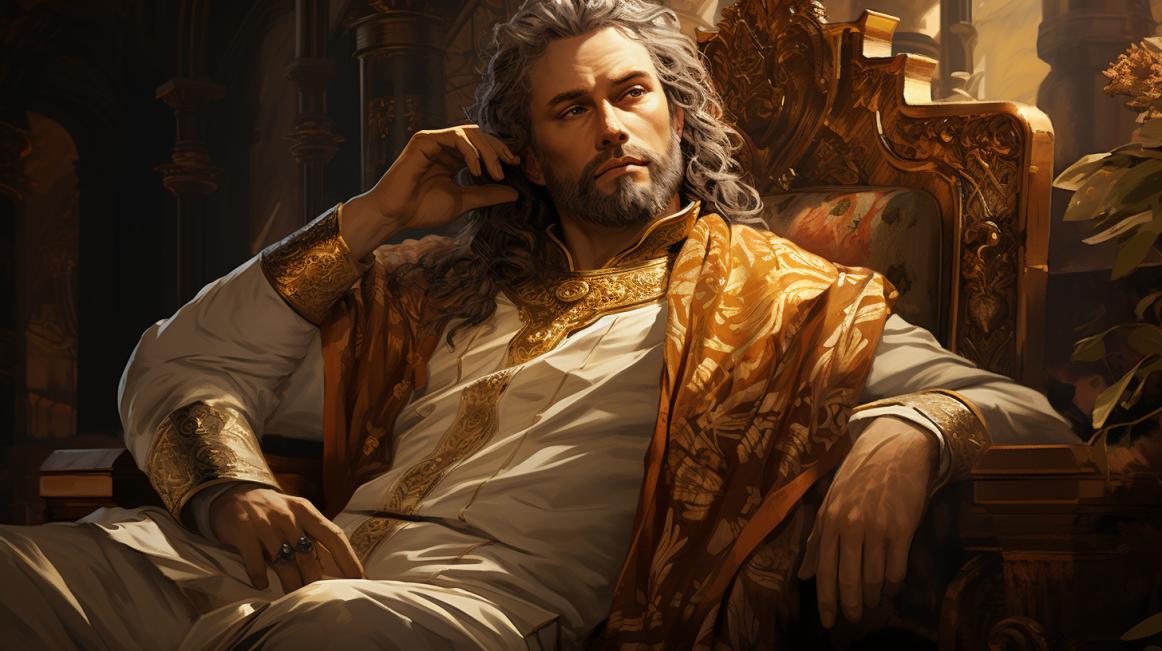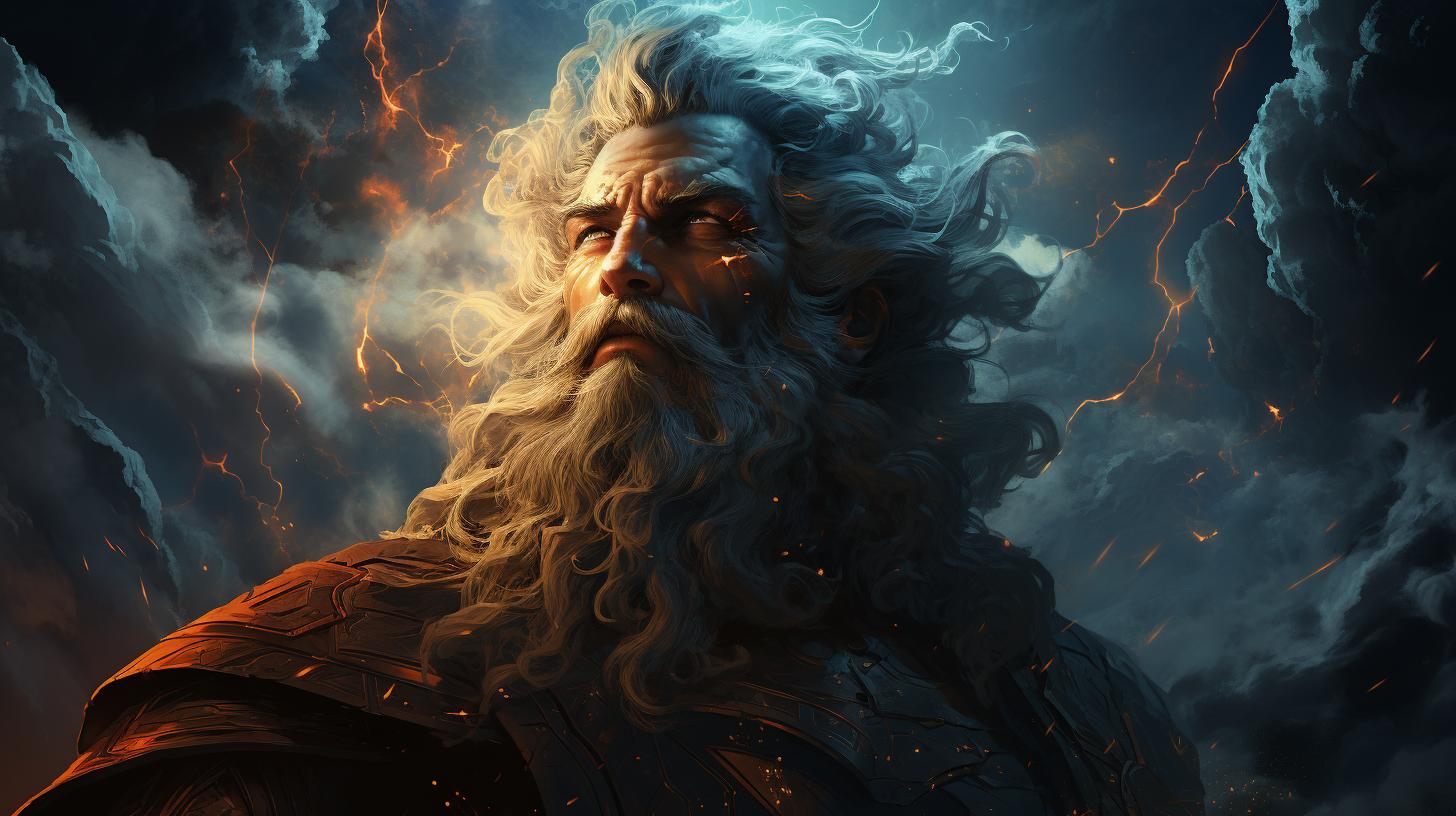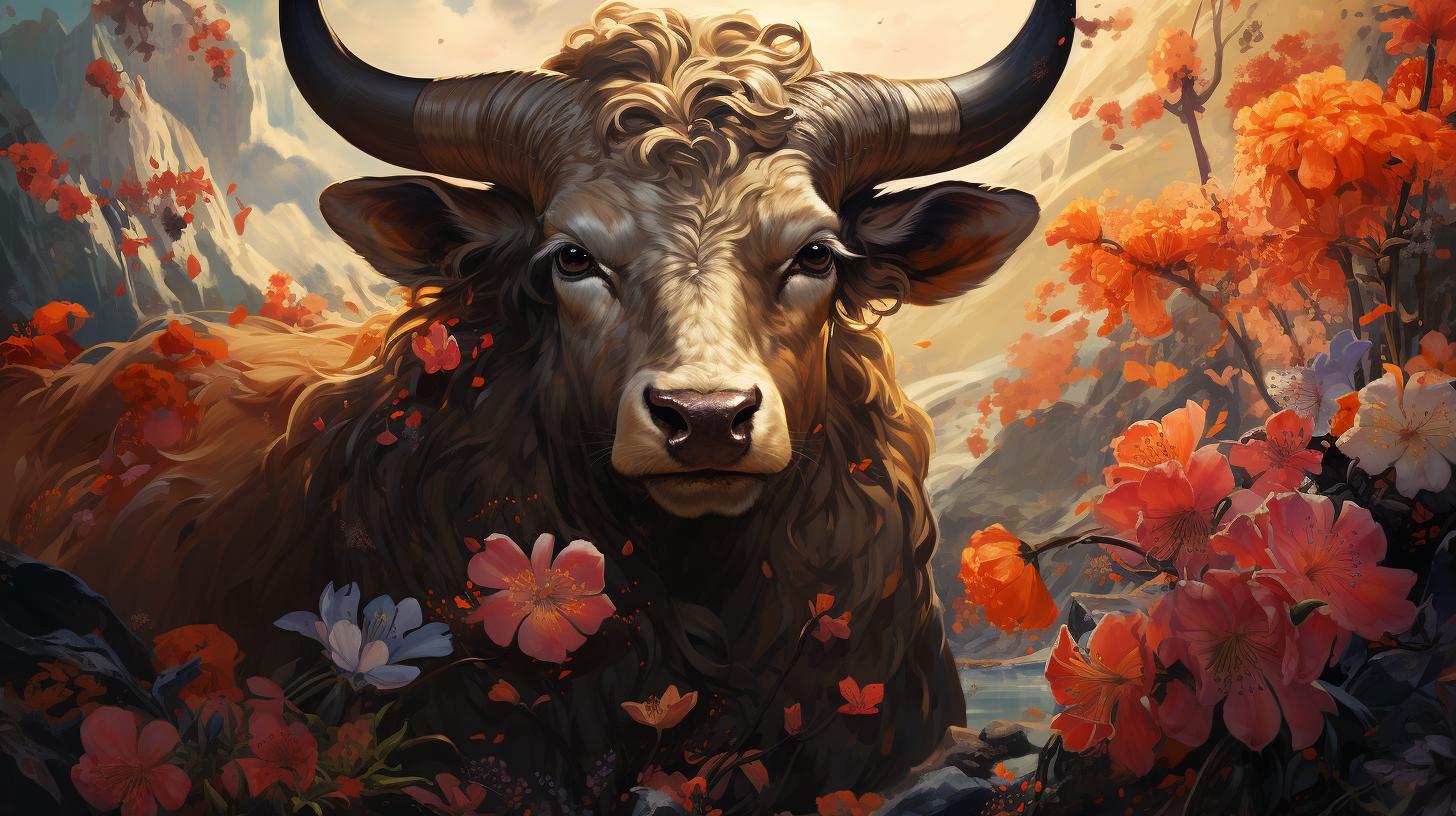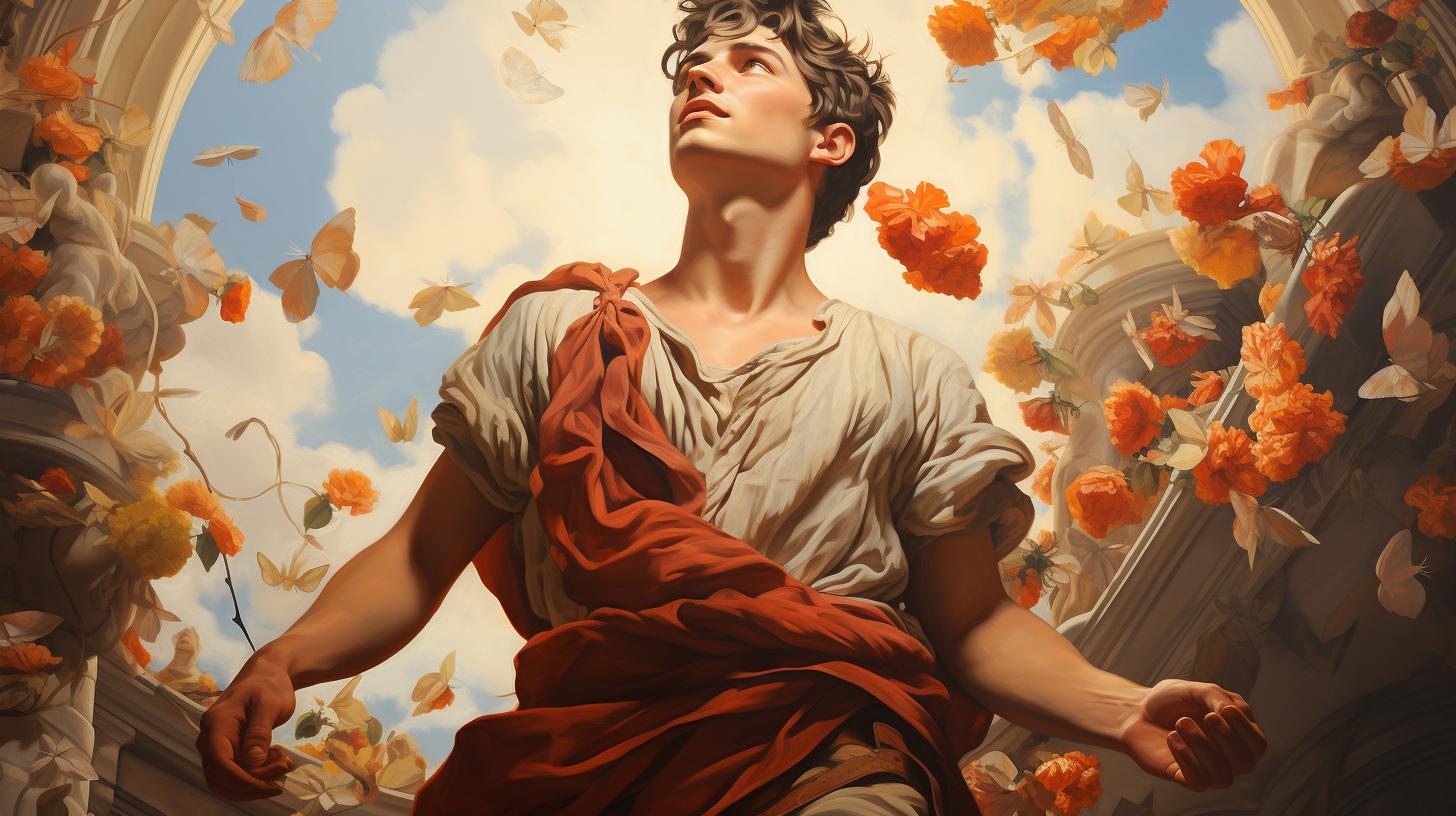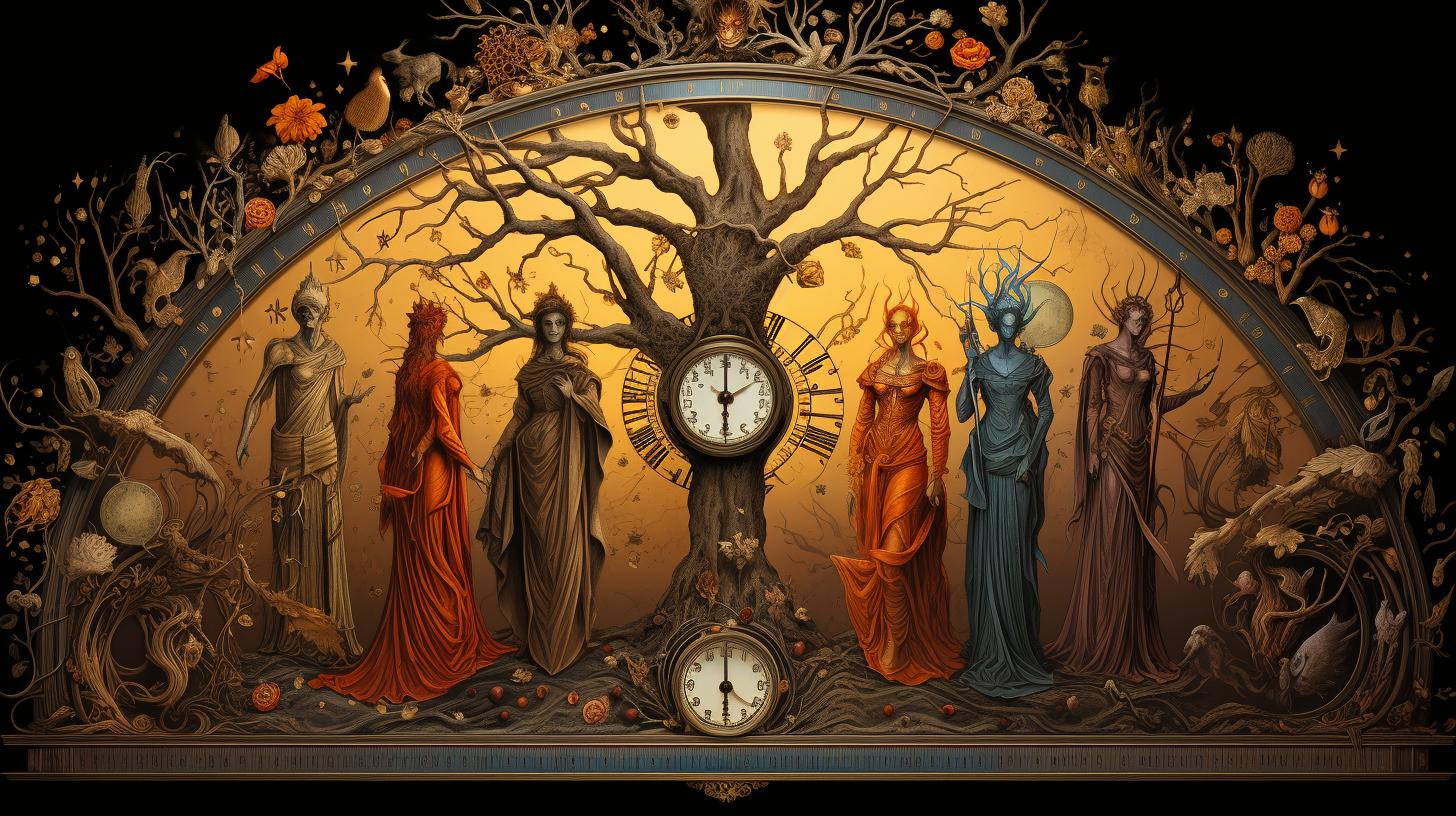Charybdis Greek Mythology: Exploring the Maritime Monster

Charybdis Greek Mythology is a fascinating aspect of ancient Greek lore. It is characterized by the perilous monster Charybdis and its connection to the legendary creature Scylla in Greek mythology.
This article provides an overview of Charybdis and Scylla, delves into their origins, explores their roles in famous literary works such as the Odyssey and the Aeneid, and examines the symbolic interpretations associated with navigating the treacherous path between these two mythical beings.
Additionally, it touches upon the pronunciation of Charybdis and its references in popular culture.
Charybdis Greek Mythology
Charybdis is a captivating creature of Greek mythology, renowned for her position in maritime folklore. She played a central role in the treacherous waters of the Strait of Messina, where she dwelled alongside the formidable Scylla. Known for creating perilous whirlpools that could engulf ships and their crews, Charybdis was described as a monstrous sea creature with an enormous mouth that devoured water, giving rise to immense whirlpools that wreaked havoc on any nearby vessels.
Various versions of Charybdis’s origin exist within Greek mythology. In one rendition, she is believed to be the daughter of Pontos (the Sea) and Gaia (the Earth), assisting her father in flooding lands and islands during his dispute with Zeus. However, Zeus deemed her actions as thievery and captured her, chaining her beneath the sea and transforming her into the sea monster we know today.
Another account tells of Charybdis as a mortal woman who stole Heracles’ cattle, leading Zeus to cast her into the sea.
Often depicted as a giant serpentine creature with a colossal mouth, Charybdis used her voracious appetite to consume seawater and generate powerful whirlpools.
Homer described her as a vesicular monster with fins instead of arms and legs. She was notorious for her insatiable thirst, drinking water three times a day and causing the ebb and flow of tides.
Charybdis frequently appears in Greek mythology, often mentioned in conjunction with Scylla. The phrase “Between Scylla and Charybdis” has become a metaphor for choosing the lesser of two evils.
In Homer’s Odyssey, Odysseus encounters Charybdis, losing six of his men when their ship ventures too close to her. Later, Odysseus himself becomes ensnared in Charybdis’s vortex, but manages to survive by clinging to a fig tree.
In the tale of Jason and the Argonauts, Hera and the Nereid Thetis provide assistance to navigate safely past Charybdis and Scylla.
In Virgil’s Aeneid, the Trojans are warned about Charybdis and Scylla, advised to steer clear by sailing around Cape Pachynus.
However, they deviate from their course and encounter Charybdis, resulting in the sinking of their ship.
Charybdis, also known as “Kharybdis” or “Kharubdis,” is most often described as a female beast.
Her name roughly translates to “to swallow” or “to belch.” Together with Scylla, she creates a nearly impassable passage known as “Between Scylla and Charybdis.”
Overview of Charybdis and Scylla
Charybdis and Scylla, two formidable figures in Greek mythology, have captivated the imaginations of storytellers for centuries.
This overview delves into their legends, exploring their origins, roles in famous literary works, and symbolic interpretations. From the treacherous strait where they reside to the dangers they pose to seafarers, Charybdis and Scylla have left an indelible mark on ancient mythology.
The Origins of Charybdis in Greek Mythology
According to various versions, Charybdis is believed to be the daughter of Pontos (the Sea) and Gaia (the Earth). One account states that she once assisted her father in submerging lands and islands during a dispute with Zeus. However, Zeus saw her actions as a theft and punished her by transforming her into the monstrous sea creature we know today.
In another tale, Charybdis was a mortal woman who stole cattle from Heracles, leading to Zeus casting her into the sea.
Charybdis and Scylla in the Odyssey
In Homer’s epic, the Odyssey, Charybdis and Scylla loom as formidable obstacles on Odysseus’ perilous journey home. As Odysseus and his crew navigate the narrow strait between them, Charybdis poses a grave threat with her powerful whirlpools capable of swallowing entire ships.
Sadly, six of Odysseus’ men meet their doom when their vessel ventures too close to Charybdis.
Charybdis and Scylla in the Aeneid
In Virgil’s epic poem, the Aeneid, Charybdis and Scylla also make an appearance, forewarning the Trojan refugees to avoid their deadly path. Advised to navigate around Cape Pachynus to bypass the perilous duo, the Trojans deviate from their course, only to encounter Charybdis herself, who ultimately sinks their ship.
Charybdis: The Sea Monster
Depicted as a giant serpentine creature with a voracious appetite, Charybdis was known for her insatiable thirst, swallowing vast amounts of water three times a day. This act was believed to be the cause of the ebb and flow of tides.
Scylla: The Legendary Creature
Scylla, often mentioned together with Charybdis, is described as a multi-headed monster with razor-sharp teeth. Positioned on a rock opposite Charybdis, she would snatch sailors from passing ships, bringing destruction and terror.
The Perilous Strait: Scylla and Charybdis
The narrow strait where Charybdis and Scylla reside created an almost impossible passage to navigate. Sailors faced the harrowing decision of choosing between the lesser of two evils, caught between Scylla’s deadly grasp and Charybdis’ engulfing whirlpools.
Charybdis and Scylla: The Lesser of Two Evils
The phrase “between Scylla and Charybdis” has now become a metaphor for choosing the lesser of two evils. It represents the challenges individuals face when presented with two undesirable options.
Navigating Charybdis and Scylla: Mythological and Symbolic Interpretations
Charybdis and Scylla’s legends have been interpreted in various ways, symbolizing the dangers and difficulties of life’s choices. Their mythical depiction serves as a reminder to navigate wisely and make decisions that minimize harm.
Charybdis Pronunciation and Popular Culture References
The correct pronunciation of Charybdis may vary, but it is often pronounced as “kuh-rib-dis” or “kuh-rib-dees.” This mythical creature continues to inspire works of literature, movies, and other forms of popular culture, maintaining its presence in modern storytelling.
The Origins of Charybdis in Greek Mythology
Charybdis, the infamous sea monster of Greek mythology, has a fascinating origin that is shrouded in ancient tales and legends. According to one version, Charybdis is believed to be the daughter of Pontus (the Sea) and Gaia (the Earth).
In a fierce dispute between Pontus and Zeus, Charybdis helped her father flood lands and islands. However, Zeus saw her actions as theft and punished her by capturing and chaining her beneath the depths of the sea.
It was there that Charybdis transformed into the monstrous sea creature we know today.
Another myth surrounding Charybdis suggests a different origin. This version portrays her as a mortal woman who committed the audacious act of stealing cattle from the mighty Heracles. As punishment for her crime, Zeus cast her into the sea where she underwent a gruesome transformation, becoming the fearsome sea monster who creates perilous whirlpools.
Though these two versions differ in their portrayal of Charybdis’ origin, they both convey the underlying theme of punishment and transformation. Whether as the daughter of Pontus and Gaia or as a mortal woman punished by Zeus, Charybdis embodies the consequences of daring to challenge the gods.
Charybdis and Scylla in the Odyssey
In the epic poem The Odyssey by Homer, the formidable duo of Charybdis and Scylla poses a significant challenge for the brave protagonist, Odysseus, and his crew. As they navigate the perilous Strait of Messina, they must choose between the six-headed monster Scylla, perched upon the cliffs, and the relentless whirlpool of Charybdis.
Odysseus receives a warning about the dangers they present from the sea nymph, Circe. He is advised to steer closer to Scylla’s side and avoid Charybdis altogether, as it would mean certain destruction for their ship and crew.
Despite the advice, Odysseus ultimately decides to face the risk of losing a few men to Scylla’s fierce jaws, rather than exposing them all to the overwhelming vortex of Charybdis.
As the crew approaches, Scylla devours six of Odysseus’ men in one swift motion, leaving them with a sense of helplessness and despair. This encounter with the terrifying monster becomes a crucial part of Odysseus’ journey, symbolizing the unavoidable trade-offs and sacrifices that heroes must endure on their quests.
The description of Charybdis in The Odyssey portrays it as a monstrous entity capable of swallowing an entire ship, creating a powerful whirlpool in the process. Its insatiable appetite for water manifests in its thrice-daily gulps, which cause the ebb and flow of the tides.
While Odysseus manages to navigate through the treacherous Strait of Messina, the encounter with Charybdis and Scylla serves as a testament to the immense challenges he faces on his journey back to Ithaca.
It emphasizes the sacrifices and difficult decisions heroes must undertake in order to overcome the obstacles in their path.
Charybdis and Scylla in the Aeneid
In Virgil’s epic poem, the Aeneid, the Trojan hero Aeneas and his fleet encounter the treacherous duo of Charybdis and Scylla. As Aeneas and his crew navigate the dangerous waters near the Strait of Messina, they receive a warning about the perilous nature of these mythical creatures.
Aeneas heeds the advice given to him by a nymph, Thetis, and the goddess Hera. They advise him to sail closer to the dangerous cliffs of Scylla, rather than risk being swallowed by the churning whirlpool of Charybdis.
Recognizing the magnitude of their predicament, the Trojan fleet follows the guidance of the divine entities and steers clear of the deadly whirlpool.
Virgil portrays Charybdis as an immense water vortex capable of engulfing entire ships.
The poet emphasizes the destructive power of Charybdis by describing how it sucks in and spews out vast quantities of water, posing a major threat to any vessel that comes too close.
This vivid imagery serves as a testament to the might and danger associated with Charybdis.
Although Charybdis plays a significant role in the Aeneid, Scylla receives less attention. Nevertheless, this legendary creature with multiple heads and snapping jaws lurks on the opposite side of the strait, ready to snatch any unfortunate sailors who steer too close to her lair.
Virgil’s portrayal of Charybdis and Scylla in the Aeneid serves as a cautionary tale, emphasizing the importance of making difficult choices and avoiding the perils that can arise in life’s voyages.
Furthermore, this encounter underscores the indomitable spirit of Aeneas as a hero, successfully navigating the obstacles thrown his way.
Charybdis: The Sea Monster
Charybdis, a legendary creature in Greek mythology, is often depicted as a fearsome sea monster residing in the Strait of Messina. This treacherous being is described as having an enormous gaping mouth, capable of swallowing great amounts of water and creating massive whirlpools that can easily destroy nearby ships.
In Greek literature, Charybdis is commonly associated with the concept of endangering navigation and is often mentioned alongside Scylla, forming a legendary obstacle that sailors must brave.
The origins of Charybdis vary in different accounts of Greek mythology. In one version, she is believed to be the daughter of Pontus (the Sea) and Gaia (the Earth).
According to this narrative, Charybdis played a role in a dispute between her father and Zeus, assisting Pontus in flooding lands and islands. However, Zeus saw her actions as theft and punished her by transforming her into the monstrous sea creature she is known as today.
Another version suggests that Charybdis was a mortal woman who angered Zeus by stealing Heracles’ cattle, resulting in her being cast into the sea.
Described as a serpent-like creature with an insatiable thirst, Charybdis possessed the ability to consume large amounts of water three times a day, causing the ebb and flow of tides.
Often depicted with fins in place of arms and legs, she symbolizes the relentless power of the sea and the dangers it holds for seafarers. Charybdis was feared for her formidable strength, capable of wreaking havoc on any unfortunate vessel that strayed too close to her presence.
Charybdis’s prominent appearance in Greek mythology can be seen in various literary works. In Homer’s Odyssey, the protagonist, Odysseus, faces Charybdis and loses six of his men when their ship ventures too near her whirlpool.
Odysseus himself later finds himself caught in Charybdis’s clutches, only narrowly escaping by clinging to a fig tree. In the story of Jason and the Argonauts, the heroes receive aid from Hera and the nymph Thetis to navigate the perilous path between Charybdis and Scylla.
Charybdis is often referred to as a female beast and is also known by alternate spellings such as ‘Kharybdis’ or ‘Kharubdis’. Her name roughly translates to ‘swallow’ or ‘belch’.
Together with Scylla, she creates an almost insurmountable passage, establishing the phrase ‘Between Scylla and Charybdis’ as a metaphor for choosing the lesser of two evils. Even today, Charybdis continues to inspire awe and fascination as a formidable creature of Greek mythology.
Scylla: The Legendary Creature
Scylla is a prominent figure in Greek mythology, known as a fearsome sea monster that inhabited the Strait of Messina alongside Charybdis. Described as a six-headed creature with terrifying features, Scylla struck fear into the hearts of sailors who dared to traverse her territory.
Her lower body was composed of twelve legs and her heads were each equipped with three rows of sharp teeth.
According to mythology, Scylla was once a beautiful nymph who caught the attention of the sea god Glaucus. However, Glaucus’s attempts to win her affections were in vain as she was repulsed by his transformation into a sea creature.
In retaliation, Glaucus sought the help of the sorceress Circe, who turned Scylla into the monstrous being we know today.
Scylla’s presence in the Odyssey is particularly significant.
In Homer’s epic, she posed a deadly threat to the hero Odysseus and his crew. As ships sailed close to Scylla’s lair, she would snatch a sailor from each vessel, devouring them in an instant.
Odysseus faced the difficult choice of navigating past Scylla’s deadly embrace while trying to avoid the treacherous whirlpool of Charybdis.
It is important to note that Scylla and Charybdis are often mentioned together, representing a perilous and unavoidable dilemma.
Sailors were forced to choose between the two dangers, often meeting disastrous consequences regardless of their decision.
Scylla’s role in Greek mythology reflects the universal theme of the destructive and uncontrollable forces of nature.
She serves as a reminder of the dangers that lurk in unknown depths, captivating the imagination of storytellers and seafarers alike.
The Perilous Strait: Scylla and Charybdis
The story of Scylla and Charybdis revolves around a treacherous strait that served as a dangerous obstacle for sailors in Greek mythology. Located in the Strait of Messina, this narrow passage between Italy and Sicily was notorious for its perilous nature.
Scylla, a legendary creature with multiple heads and voracious appetites, resided on one side of the strait, while Charybdis, a monstrous sea creature with a penchant for creating deadly whirlpools, dwelled on the other side.
Venturing through this stretch of waters was a daunting task, as sailors had to navigate between the two threats. Getting too close to Scylla meant losing crew members to her snapping heads, while getting within range of Charybdis would result in the entire ship being swallowed by her raging whirlpools.
According to ancient tales, passing through the strait required careful navigation and impeccable timing. Sailors had to choose the lesser of two evils and find the narrow path between Scylla’s wrath and the cataclysmic whirlpools of Charybdis.
This perilous strait became a metaphorical symbol for making difficult choices where both options present considerable risks. The phrase “between Scylla and Charybdis” is still used today to describe situations where one is faced with two undesirable alternatives.
Notable Accounts
The encounters with Scylla and Charybdis in Greek mythology feature prominently in famous works such as Homer’s “Odyssey” and Virgil’s “Aeneid.” These epic poems depict the harrowing experiences of renowned heroes as they brave the dangers of the strait.
In the Odyssey, the hero Odysseus and his crew have a tragic encounter with the monstrous creatures. While attempting to navigate through the strait, they fall victim to Scylla’s attacks and later face the deadly whirlpools of Charybdis, which they barely escape.
In the Aeneid, the Trojan hero Aeneas and his companions also face the perils of Scylla and Charybdis. Advised to steer clear of the strait, they deviate from their course and fall into Charybdis’ clutches, losing ships and comrades in the process.
Symbolic Significance
The tale of Scylla and Charybdis holds symbolic significance beyond its literal dangers. It serves as a cautionary reminder of the precarious nature of life and the need to make choices that involve calculated risks.
The strait represents the unpredictable challenges one can encounter on their journey, where the options may seem equally daunting. The struggle to navigate between Scylla and Charybdis mirrors the human experience of navigating through difficult decisions, weighing the consequences, and charting a course amid uncertainty.
Through the ages, the story of Scylla and Charybdis continues to inspire and resonate, reminding us of the perils we may face as we navigate the turbulent waters of life.
Charybdis and Scylla: The Lesser of Two Evils
Charybdis and Scylla, both formidable creatures of Greek mythology, embody the treacherous nature of the sea. Their daunting presence creates a precarious situation for sailors, forcing them to choose between facing either one of these formidable beasts.
However, among the two, Charybdis often represents the lesser of two evils.
Charybdis, known for her insatiable hunger, creates ferocious whirlpools that devour anything in their path. Her massive mouth engulfs vast amounts of water, causing devastating whirlpools that threaten to swallow entire ships and their crews.
In comparison, Scylla, a fearsome multi-headed monster with razor-sharp teeth, lurks on the opposite side of the strait, ready to snatch unsuspecting sailors.
While both Charybdis and Scylla pose great danger, sailors often opt to face Charybdis as the more manageable adversary.
Although her whirlpools can be deadly, they allow for the possibility of survival by strategical navigation or sheer luck. Scylla, on the other hand, presents a much more formidable threat, as her multiple heads and swift attacks leave little room for escape.
The phrase “between Scylla and Charybdis” has become synonymous with a no-win situation and the difficult choice between two equally undesirable options. Despite the perils associated with Charybdis, sailors often perceive her as the lesser evil, as the possibility of survival exists if navigated with caution and skill.
In mythological and symbolic interpretations, this perilous strait between Charybdis and Scylla serves as a metaphor for life’s challenges. It represents the constant dilemmas we face where no clear solution exists, forcing us to make tough decisions and accept the unavoidable hardships that come our way.
The rivalry between Charybdis and Scylla, though terrifying, offers a valuable lesson about making choices and embracing the lesser evil. It teaches us the importance of weighing the risks and benefits, as well as considering the potential for survival and mitigating the potential consequences.
In conclusion, Charybdis, though undeniably dangerous, is often considered the lesser of two evils when faced with the choice between her and Scylla. By understanding the nature of each creature and the perils they present, sailors and mortals alike can navigate the treacherous waters with a greater chance of survival.
Navigating Charybdis and Scylla: Mythological and Symbolic Interpretations
When it comes to the perilous journey of navigating the treacherous waters between Charybdis and Scylla, there are various mythological and symbolic interpretations associated with this daunting task. Delving deeper into Greek mythology, we uncover the layers of meaning intertwined with this legendary ordeal.
The Duality of Choices
The encounter with Charybdis and Scylla presents a classic allegory of choosing between two evils. It serves as a powerful metaphor for the inherent dilemmas one faces in life, where no matter the decision made, there are consequences.
The Balance of Power
Charybdis and Scylla represent two opposing forces, showcasing the delicate balance of power in the natural world. Charybdis embodies the destructive force of water, with her relentless swallowing of the sea.
On the other hand, Scylla epitomizes the predatory nature of the deep, with her menacing tentacles ready to snatch unsuspecting victims.
The Test of Character
Navigating the treacherous strait between Charybdis and Scylla becomes more than a physical challenge; it becomes a test of one’s character and resilience. It is a journey that examines one’s ability to make tough choices, to face fear head-on, and to endure the consequences with courage.
The Pursuit of Balance
Often, the journey through Charybdis and Scylla serves as a reminder of the importance of finding balance amidst chaos. It urges individuals to seek equilibrium in their lives, avoiding the extremes that may lead to destruction.
The lesson lies in embracing the challenges and learning to navigate through them without succumbing to their overwhelming forces.
The Eternal Cycle
The mythological tale of Charybdis and Scylla reflects the cyclical nature of life. Just as the sea churns and whirlpools form, so too do trials and tribulations arise. It serves as a reminder that challenges are an inevitable part of existence, and it is our ability to persevere and adapt that defines our journey.
Symbolic Interpretations
Beyond the mythological narrative, Charybdis and Scylla have found their way into various symbolic interpretations. They epitomize the perils and obstacles one encounters in their personal quests, whether it be in relationships, careers, or personal growth.
They symbolize the daunting nature of obstacles that can threaten to consume us if we let them.
In Popular Culture
The enduring allure of Charybdis and Scylla has permeated popular culture over the years. They have been referenced in literature, art, and even films, each time representing the challenges that individuals face in their own journeys.
From epic poetry to modern-day storytelling, these mythical beings continue to captivate and inspire.
In conclusion, navigating the treacherous waters between Charybdis and Scylla carries mythological and symbolic significance. It serves as a timeless reminder of the choices we must make, the balance we must find, and the resilience we must embody as we navigate the challenges in life’s tumultuous journey.
Charybdis Pronunciation and Popular Culture References
Properly pronouncing “Charybdis” can be a challenge for those unfamiliar with Greek mythology. The correct pronunciation is often interpreted as “kuh-RIB-dis” or “KAIR-uhb-dis,” with the emphasis placed on the second syllable.
However, variations can be found based on regional accents and personal preferences.
In popular culture, Charybdis has made appearances in various forms of media, including literature, film, and television. One notable example is Rick Riordan’s “Percy Jackson & The Olympians” series, where Charybdis is depicted as a monstrous whirlpool rather than a sea serpent.
This series has introduced the mythological creature to a new generation of readers.
Another notable representation of Charybdis can be found in the popular video game “God of War III.” The game features a gripping battle scene against the immense, tentacle-like creature, adding an interactive element to the mythological tale.
Charybdis and its counterpart, Scylla, have also inspired idiomatic expressions and phrases. The expression “between Scylla and Charybdis” is often used metaphorically to describe a situation where one must choose between two equally challenging or unfavorable options.
In conclusion, Charybdis’s pronunciation may vary, but its presence in popular culture remains strong. From books to video games, this mythical creature continues to captivate audiences with its role in Greek mythology.
.











